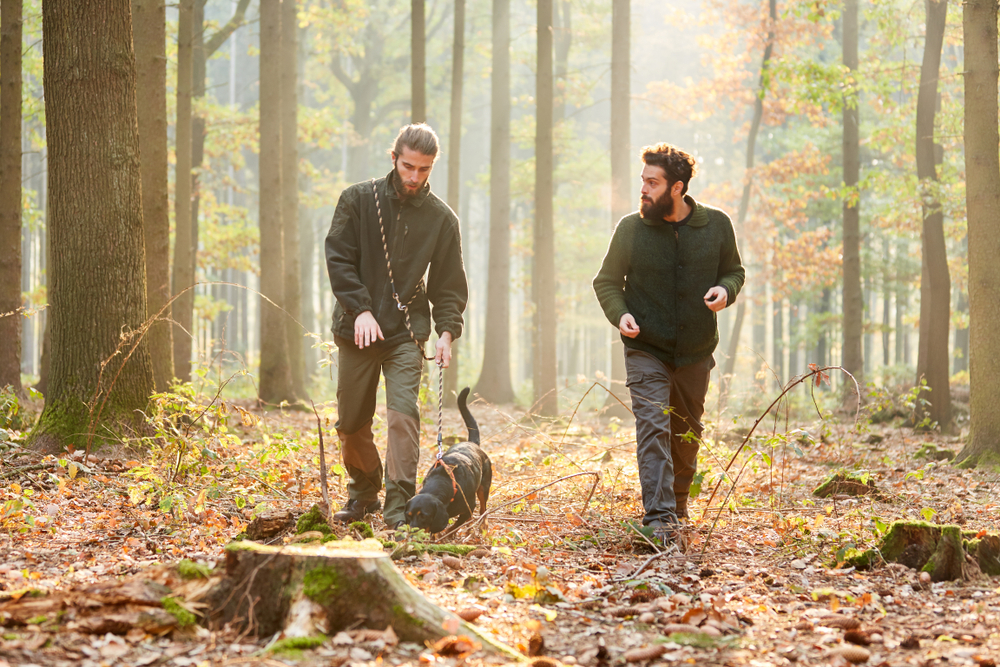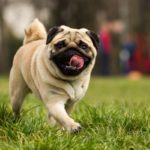Every hunter knows that there will be times when the deer runs away through the forest after it has been shot. Sometimes you can find it quickly and easily, but there are other occasions when you are unable to track the injured animal.
Not only do you lose your prize, but the deer is left to die slowly from their wounds. It is an incredibly frustrating situation to be in.
This can be avoided if you have a tracking dog. They can follow the scent of the blood trail and lead you to the deer. But how do you go about training a tracking dog? Keep reading to find out.

What Will You Need?
The most important thing you will need when training a blood tracking dog is time and patience. It is a challenging task that can take a while for the dog to get the hang of.
Avoid losing your temper, as this will not help your dog to learn. Repetition, praise and rewards, and a simple but firm ‘no’ when they display unwanted behaviour is the best way to do it.
Make sure you have plenty of treats to hand. You will also need a harness and a leash. You will also need to use an appropriate space for training.
Unless you have a lot of land, it is unlikely that your garden or yard will be big enough, and you also need to do some of the training in woodland. A large field with woodland to one side is ideal.
Make sure you consider who else will use that space – you don’t want to be putting deer blood and legs all over a field where children will come to play football.
When it comes to laying down a scent trail, there are different things you can use. The best things are: deer blood in a spray or squeeze bottle, deer meat, deer hide, and beef liver.
The Beef Liver Method
This is a good way to start the training when your dog is young, as beef livers are easier to get hold of than deer blood and deer meat.
Begin by dragging the beef liver across the ground to leave a scent trail. Start with short distances and straight lines, then gradually make it more challenging over time.
With your puppy on the leash and wearing their harness, you show them the beef liver. Let them give it a good sniff so they can get used to the scent.
Then take your puppy to the start of the scent trail and let them follow it to the end – this is called running the line. If they lose focus, bring their attention back to the scent trail.
It is best to try and move quickly. When you reach the end of the line, reward your puppy with a treat and lots of praise. You should repeat this process, making the scent trails longer with directional changes.
Eventually you should include some challenging 90 degree turns. When your puppy gets it right and does a good job, remember to give them lots of praise.
Once your dog has mastered the skill of following a scent trail, it is time to start using deer meat so they get used to the smell of deer, as this is what they will be tracking!
The Squeeze Bottle Method
The next phase of the training is to start using real deer blood, and creating much longer scent trails to replicate the real tracking experience.
You should save some blood from previous deers you have caught and freeze it. When you are ready to use it for training, thaw it and put it in a squeezy bottle (you might need to filter it first).
Walk around your chosen training area, dribbling a trail of blood as you go. Begin with simple trails, gradually increasing the difficulty and distance throughout the training.
At the end of the scent trail, place some deer hide or a deer leg. Allow the trail to age for around two hours.
Bring your dog to the area, but don’t show them the beginning of the scent trail. See if they can find it on their own. If they can’t find it then you can show them, but build up to them being able to find it themselves.
Let them follow the trail (still on the leash) right to the end where they will find the prize. Dogs love chewing on deer hide or a deer leg, so this will be a great reward for their hard work.
Once your dog has learned to follow a blood line, start laying scent trails in areas where you know there are deer.
This will help them to practice staying on the scent even with distractions, like the smell of live deer or deer poop. If your dog can do this, then they should be ready to go on a real hunt and track an injured deer!
General Tips
Choose the right breed – Catahoula Curs, Blackmouth Curs, Dachshunds, Bloodhounds, Labrador Retrievers and Blue Lacy Dogs are all excellent breeds to train up as blood tracking dogs.
Keep in mind that the larger dogs may be more difficult to control on the leash, but will be able to cover more ground.
Start early – you will have more success training your dog if you start when they are a puppy.
They won’t have the stamina for a full track at that young age, but the sooner they learn the skills the more efficient they will be when they are old enough to join you on a real hunt.
Maintain control – train them to follow the scent on a leash so you can keep control.
It is recommended to put your dog in a harness that they only wear when tracking to help them understand what they need to do.
Make it real – Freeze deer blood and legs from the deer so you can use them for training out of season.
Let the blood trail sit for several hours before you start, as this makes it more realistic. You should also do some training sessions at night to recreate what it will actually be like.
You should also make the mock tracks challenging – there will be parts of the track where the deer stops bleeding or you have to navigate a tricky obstacle, so recreate this in your training.
You can observe your dog and get to know their body language when they lose the scent and pick it up again, so you can recognize it during a real track.
Things can go wrong – remember that even if you train your dog really well, there will be some occasions where they lose the scent and are unable to pick it up again.
This isn’t a reflection on your dog’s ability or the standard of the training, it just happens! But you are much more likely to find the deer with a tracking dog than without one.
Check the law in your state – blood tracking dogs are not legal in every state, so make sure you check the laws in your local area before you decide to train up a dog of your own.
- 8 Signs That Your Dog Is In Heat - November 8, 2022
- Why Is My Dog Whining Whilst Carrying A Toy In Their Mouth? - August 17, 2022
- Reasons Why Your Dog’s Poop Is White And What To Do About It - August 17, 2022





